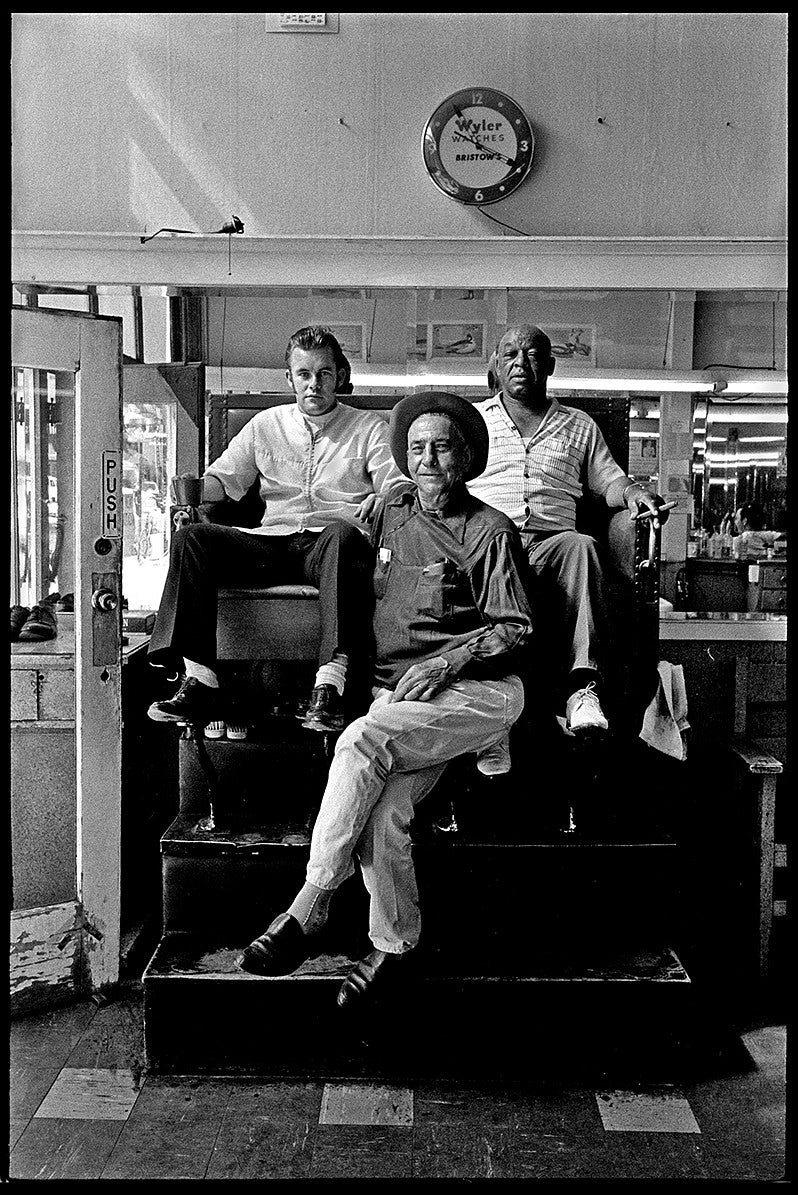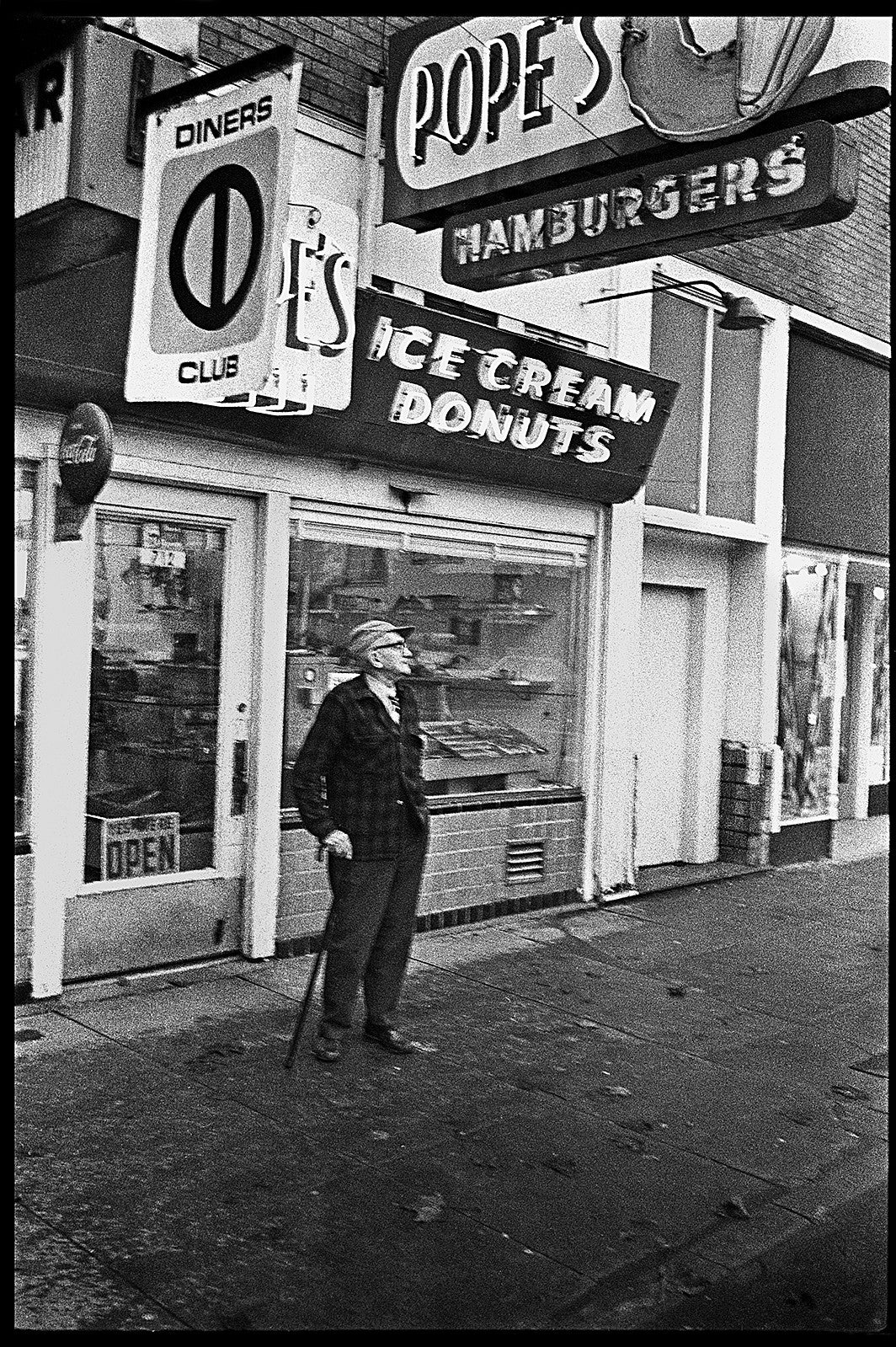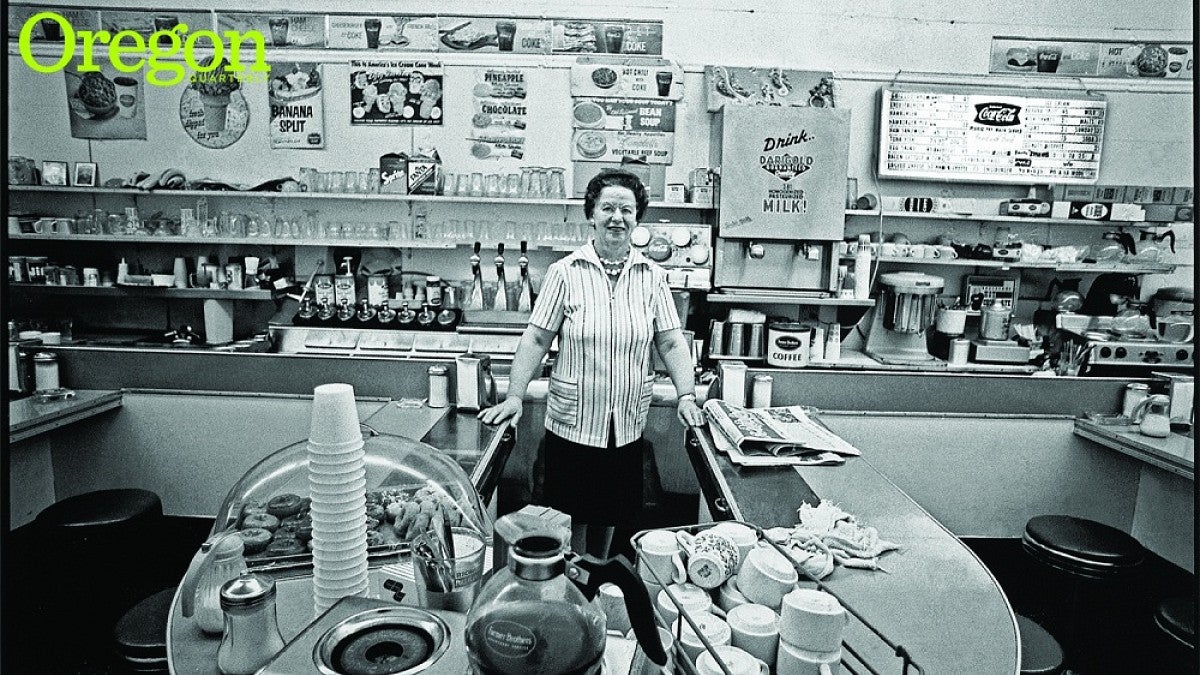These photographs of downtown Eugene, made between 1971 and 1974, reveal that despite the decline of retail business, the area was still a lively civic place, a community of people who lived, worked, and mingled. Although the Eugene Urban Renewal Agency had begun to demolish their old neighborhood on Willamette Street in the early 1970s, many people stayed to the end, conducting their daily lives in their favorite haunts: the little cafés, $3 daily hotel rooms, apartments, and smoke-filled bars and movie theaters.
For a brief time, the abandoned buildings scheduled for the wrecking ball served as studios for artists and entrepreneurs who paid cheap rents to the renewal agency. A number of business owners, who had received eviction notices with financial compensation from Urban Renewal, moved to new buildings, but many failed. Critics blamed the lack of customers on the closing of main streets for the creation of a pedestrian mall that lacked shelter from the rain and prohibited motorized vehicles.
Four decades later, thanks to public and private investment, downtown Eugene appears to be regaining vitality, with streets now open for motorized and human-powered transportation, new apartments, a transit station, food carts, cafés, entertainment venues, a new city library, and a community college center. But a connection to the area's historical past disappeared with its lost architecture and vanished people, preserved only in photographs.


—By John Bauguess


